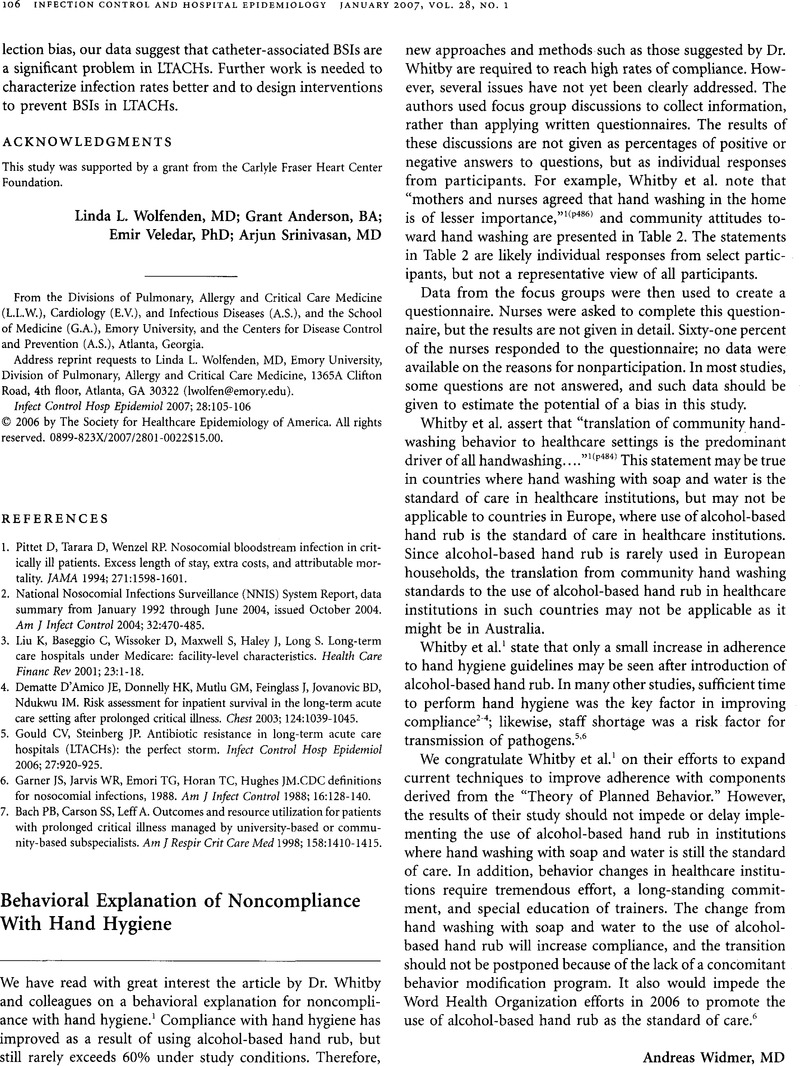No CrossRef data available.
Article contents
Behavioral Explanation of Noncompliance With Hand Hygiene
Published online by Cambridge University Press: 02 January 2015
Abstract
An abstract is not available for this content so a preview has been provided. As you have access to this content, a full PDF is available via the ‘Save PDF’ action button.

- Type
- Letters to the Editor
- Information
- Copyright
- Copyright © The Society for Healthcare Epidemiology of America 2007
References
1.
Whitby, M, McLaws, M, Ross, M. Why health care workers don't wash their hands: a behavioral explanation. Infect Control Hosp Epidemiol
2006;27:484–492.CrossRefGoogle Scholar
2.
Trampuz, A, Widmer, AF. Hand hygiene: a frequently missed lifesaving opportunity during patient care. Mayo Clin Proc
2004;79:109–116.Google Scholar
3.
Voss, A, Widmer, AF. No time for handwashing!? Handwashing versus alcoholic rub: can we afford 100% compliance?
Infect Control Hosp Epidemiol
1997;18:205–208.Google Scholar
4.
Widmer, AF. Infection control and prevention strategies in the ICU. Infect Dis Digest
1995;2:13–14.Google Scholar
5.
Andersen, BM, Lindemann, R, Bergh, K, et al. Spread of methicillin-resistant Staphylococcus aureus in a neonatal intensive unit associated with under-staffing, overcrowding and mixing of patients. J Hosp Infect
2002;50:18–24.CrossRefGoogle Scholar
6.
Eckmanns, T, Rath, A, Ruden, H, Gastmeier, P, Daschner, F. Outbreak of Enterobacter cloacae related to understaffing, overcrowding, and poor hygiene practices. Infect Control Hosp Epidemiol
2000;21:305–307.CrossRefGoogle ScholarPubMed




